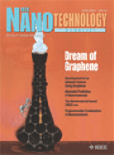
IEEE Nanotechnology Magazine
Scope & Guideline
Unveiling the Future of Nanotechnology Research
Introduction
Aims and Scopes
- Nanomaterials Research and Applications:
The journal consistently highlights research on various nanomaterials, including their synthesis, characterization, and applications in fields such as electronics, medicine, and environmental science. - Quantum Technologies:
A core area of focus involves quantum technologies, particularly in quantum computing and quantum devices, exploring their potential applications and theoretical advancements. - Nanoelectronics and Integrated Circuits:
The journal emphasizes advancements in nanoelectronics, including the development of new materials and devices that push the limits of traditional electronics, such as memristors and quantum-dot lasers. - Biosensing and Biomedical Applications:
Research on nanotechnology's applications in healthcare, including biosensors and nanobiomedical devices, is a significant area, showcasing innovative solutions for diagnostics and treatment. - Energy-Efficient Computing:
The journal explores energy-efficient computing technologies, specifically focusing on novel computing paradigms like approximate computing and memristive devices.
Trending and Emerging
- Artificial Intelligence in Nanotechnology:
There is a growing interest in integrating AI with nanotechnology, particularly in applications like sensor design and optimization, reflecting the broader trend of AI's influence across scientific fields. - Quantum Computing Advances:
Quantum computing remains a hot topic, with increasing publications on new algorithms, materials, and methods for enhancing quantum systems and their applications in various domains. - Nano-Enabled Healthcare Solutions:
Research focusing on nanotechnology applications in healthcare, particularly for diagnostics and treatment, is trending, driven by the demand for innovative medical technologies. - Sustainable and Green Nanotechnology:
There is an emerging emphasis on environmentally friendly and sustainable practices in nanotechnology, including biodegradable materials and low-impact manufacturing processes. - Advanced Sensor Technologies:
The development of advanced sensor technologies utilizing nanomaterials is on the rise, particularly for applications in IoT and environmental monitoring, demonstrating the practical impact of nanotechnology.
Declining or Waning
- Traditional Semiconductor Technologies:
Research centered around conventional semiconductor technologies seems to have waned, likely due to the shift towards more advanced materials and quantum computing methods. - Basic Nanomaterials Characterization Techniques:
While foundational techniques in nanomaterials characterization were once prevalent, there is a noticeable decline as the focus has shifted towards more application-driven research. - Applications in Conventional Electronics:
Papers discussing applications of nanotechnology in traditional electronics are less frequent, suggesting a pivot towards novel applications in quantum and AI-driven technologies. - Static Nanotechnology Applications:
Research focusing on static or passive applications of nanotechnology is declining, as the field increasingly emphasizes dynamic and adaptive systems.
Similar Journals
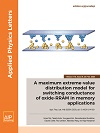
APPLIED PHYSICS LETTERS
Advancing the Frontiers of Applied Physics.Applied Physics Letters, published by AIP Publishing, is a premier journal dedicated to the rapid dissemination of research in the dynamic field of applied physics. With an ISSN of 0003-6951 and an E-ISSN of 1077-3118, the journal has carved a niche for itself since its inception in 1962, serving as a vital forum for the exchange of innovative ideas and experimental findings. As of 2023, it proudly holds a Q1 ranking in the category of Physics and Astronomy (miscellaneous), standing at rank 11 out of 81 in Scopus, reflecting its influential role in advancing scientific knowledge with an impressive 87th percentile. The journal significantly contributes to the academic community by providing an accessible platform for both groundbreaking theoretical and applied research. Researchers and professionals alike benefit from its rigorous peer-review process and timely publication, fostering collaboration and dialogue among experts in the field. While the journal currently operates under a subscription model, its comprehensive scope encourages submissions covering all aspects of applied physics, making it an essential resource for researchers and students eager to stay at the forefront of this ever-evolving discipline.

JAPANESE JOURNAL OF APPLIED PHYSICS
Empowering Discoveries in Applied SciencesThe Japanese Journal of Applied Physics is a premier publication in the field of applied physics, offering a platform for researchers and professionals to present their findings and innovations. Published by IOP Publishing Ltd, this esteemed journal has been active since 1963 and continues to contribute significantly to the understanding and advancement of applied physics across diverse applications. The journal is recognized for its rigorous peer-review process and high-quality publications, evidenced by its 2023 ranking of Q2 in Engineering (Miscellaneous) and Q3 in Physics and Astronomy (Miscellaneous). With an accessible ISSN of 0021-4922 and E-ISSN 1347-4065, the journal cultivates a global readership, fostering collaboration and innovation within the scientific community. Although the journal does not currently offer open access options, its valuable insights into the latest technological advancements and theoretical developments remain crucial for students, researchers, and industry professionals alike. By bridging the gap between fundamental physics and practical applications, the Japanese Journal of Applied Physics plays a vital role in shaping the future of applied sciences in Japan and beyond.
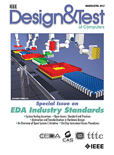
IEEE Design & Test
Innovating Design and Testing for Tomorrow's TechnologiesIEEE Design & Test is a leading academic journal published by the IEEE-INST ELECTRICAL ELECTRONICS ENGINEERS INC, dedicated to advancing the fields of Electrical and Electronic Engineering, Hardware and Architecture, and Software. With an ISSN of 2168-2356 and an E-ISSN of 2168-2364, the journal spans from 2013 to 2024, offering valuable insights and peer-reviewed research that addresses critical challenges in the design, verification, and testing of electronic systems. Recognized for its quality, the journal holds a Q2 designation in Electrical and Electronic Engineering and ranks within the top quartiles of its category, making it a notable resource for professionals and scholars alike. Its Scopus rankings, particularly a rank of #354 in Electrical and Electronic Engineering, underscores its significance and relevance in the rapidly evolving technological landscape. Although not currently open access, the journal remains committed to disseminating innovative research that shapes the future of technology, ensuring that researchers and practitioners stay at the forefront of their disciplines. IEEE Design & Test serves as an essential platform for exchanging ideas, fostering collaboration, and driving advancements in engineering and computer science.
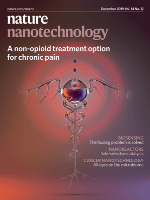
Nature Nanotechnology
Bridging Disciplines for a Nanotech Revolution.Nature Nanotechnology, published by NATURE PORTFOLIO, stands at the forefront of scientific innovation, focusing on the rapidly evolving field of nanoscience and nanotechnology. With an impressive impact factor and ranking in the top Q1 quartiles across multiple disciplines—including Atomic and Molecular Physics, Bioengineering, and Materials Science—this journal is a pivotal resource for researchers and professionals dedicated to advancing knowledge and applications at the nanoscale. Its diverse scope encompasses cutting-edge research that bridges disciplines, addressing critical challenges in engineering, physics, and biomedical fields. Although the journal currently does not offer an open-access option, readers can access a wealth of information that is vital for anyone involved in pioneering research and development efforts. With its robust editorial standards and a commitment to publishing high-caliber, groundbreaking work, Nature Nanotechnology serves as an indispensable platform for the dissemination of transformative ideas that will shape the future of technology and science.
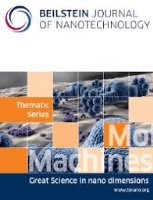
Beilstein Journal of Nanotechnology
Connecting researchers to the cutting-edge of nanotechnology.The Beilstein Journal of Nanotechnology is a prominent open access journal published by the Beilstein Institute that has been at the forefront of nanotechnology research since its inception in 2010. With a focus on cutting-edge developments in areas such as Electrical and Electronic Engineering, Materials Science, and Physics and Astronomy, this journal is ranked in the Q2 category across multiple scientific disciplines, reflecting its significant impact within the research community. The journal is accessible to a global audience and aims to foster innovation and application of nanotechnology across various fields. Featuring a rich convergence of interdisciplinary studies, the Beilstein Journal of Nanotechnology offers a platform for researchers to share their findings, thus advancing the frontiers of knowledge in this dynamic field. With publishers based in Frankfurt am Main, Germany, it continues to contribute to the scientific dialogue on nanoscience and its practical applications, making it an essential resource for academics, professionals, and students eager to stay at the cutting edge of technology.
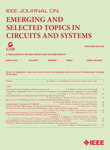
IEEE Journal on Emerging and Selected Topics in Circuits and Systems
Advancing innovation in circuits and systems.IEEE Journal on Emerging and Selected Topics in Circuits and Systems is a prestigious peer-reviewed journal published by the IEEE - Institute of Electrical and Electronics Engineers, aimed at advancing the field of electrical and electronic engineering. With its ISSN of 2156-3357 and E-ISSN of 2156-3365, this journal has established itself as a leader in the exploration of innovative concepts and applications within circuits and systems since its inception in 2011. It is recognized for its high impact factor, being categorized in the Q1 Quartile for electrical engineering in 2023, and is ranked 126 out of 797 journals in the field, placing it in the 84th percentile according to Scopus rankings. As a valuable resource for researchers, professionals, and students alike, the journal focuses on emerging technologies and selected topics that contribute to the evolution of circuit designs, signal processing, and system architecture. Although it does not offer open access, the relevance and content of the journal ensure it remains at the forefront of electrical engineering discourse, continually fostering innovation and knowledge dissemination among the scientific community.

Frontiers in Physics
Unveiling New Dimensions in Physics ResearchFrontiers in Physics is a prestigious peer-reviewed journal published by FRONTIERS MEDIA SA, dedicated to advancing the field of physics through innovative research and interdisciplinary approaches. Established as an Open Access journal in 2013, it has quickly become a vital resource for researchers, professionals, and students alike, with a shining presence in Scopus categories such as Biophysics, Materials Science, Mathematical Physics, and Physical Chemistry. With an impressive array of quartile rankings, including Q2 in several key areas, it positions itself firmly among leading journals in the field, reflecting its commitment to high-quality contributions. The journal's global reach and emphasis on collaborative research not only enhance its visibility in the scientific community but also facilitate a deeper understanding of complex physical phenomena. Researchers are encouraged to submit original works that push the boundaries of knowledge, making Frontiers in Physics an essential platform for the latest advancements in the discipline.
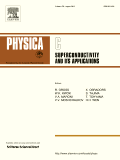
PHYSICA C-SUPERCONDUCTIVITY AND ITS APPLICATIONS
Illuminating the Future of Energy EngineeringPHYSICA C-SUPERCONDUCTIVITY AND ITS APPLICATIONS, published by Elsevier, stands as a pivotal journal in the fields of Condensed Matter Physics, Electrical and Electronic Engineering, and Energy Engineering. With its inception dating back to 1988, the journal has successfully established itself as a key platform for disseminating high-quality research and innovative applications related to superconductivity and its diverse technological implications. Although it currently does not offer open access options, the journal maintains a respectable Q3 quartile ranking in multiple categories as of 2023, indicating its continued relevance and impact within the academic community. Researchers, professionals, and students alike benefit from its insights, as it features peer-reviewed articles covering the latest advancements and theoretical breakthroughs in superconductivity. As it converges towards the end of its operational span in 2024, this journal continues to stimulate valuable dialogue and foster collaborations that push the frontiers of knowledge in this exciting and rapidly evolving domain.
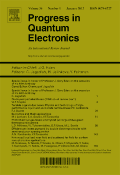
PROGRESS IN QUANTUM ELECTRONICS
Driving Progress in Atomic and Molecular PhysicsPROGRESS IN QUANTUM ELECTRONICS, published by PERGAMON-ELSEVIER SCIENCE LTD, is a premier international journal that serves as a critical forum for the dissemination of high-quality research in the fields of atomic and molecular physics, electrical engineering, and materials science. With its esteemed Q1 category ranking in several disciplines, including Atomic and Molecular Physics, Electrical and Electronic Engineering, and Electronic, Optical and Magnetic Materials, this journal commands a high impact factor and is recognized for its rigorous peer-review process. Established in 1969 and evolving through various phases, the journal currently compiles cutting-edge research that drives advancements in quantum technologies. Researchers, professionals, and students alike are invited to explore a wealth of knowledge and stay updated on pioneering developments in quantum electronics, enhancing their understanding and contributing to the progression of this dynamic field.
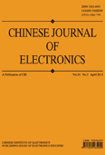
CHINESE JOURNAL OF ELECTRONICS
Advancing the Frontiers of Electronics ResearchThe CHINESE JOURNAL OF ELECTRONICS is a distinguished peer-reviewed publication in the fields of electrical and electronic engineering and applied mathematics, published by the reputable IEEE-Institute of Electrical and Electronics Engineers Inc. Based in the United States, this journal has been a significant platform for sharing innovative research since its inception in 1996. With a commendable impact factor, it is ranked Q3 in both applied mathematics and electrical engineering categories, reflecting its relevance and quality within the academic community. The journal aims to disseminate high-quality research, foster interdisciplinary approaches, and provide a forum for discussions on advancements and applications in electronics and associated fields. Although it currently does not offer open access, the CHINESE JOURNAL OF ELECTRONICS remains a key resource for researchers, professionals, and students seeking to stay at the forefront of technological developments. Its Scopus rankings—170th in applied mathematics and 365th in electrical engineering—highlight its credibility and importance in advancing knowledge and innovation.